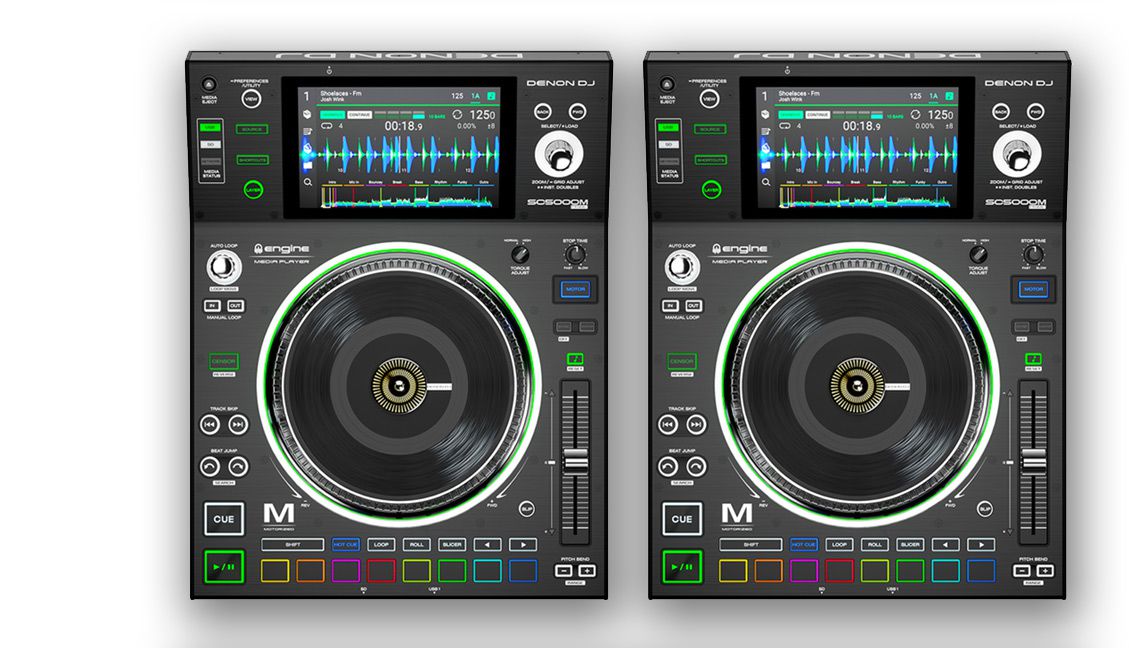News
How Well Do Those Spinning Platters Work? A Comprehensive SC5000M Review
TL;DR – It’s the SC5000 with a spinning platter. Need more than that? Here’s an extensive review of the motorized jogwheel member of the Prime ecosystem.
Since DJTT’s Dan White already wrote a comprehensive review of the original SC5000, this won’t be a full review of the unit. Rather it’s primarily a look at how the platter feels and functions, and a few thoughts on the overall Prime experience. I’ll also share an honest take on adopting a standalone platform from a dedicated DVS/laptop DJ’s perspective.
Denon DJ rolled out the Prime series as a direct competitor to Pioneer’s CDJ / XDJ lineups in 2017. While the lineup has garnered some rave reviews, Pioneer DJ gear largely continues to rule the roost in terms of sales and event DJ booths. Denon DJ has more recently taken on the market from the other angle – with the Prime 4 all-in-one. But what is it really like to spend while with the SC5000Ms as your DJ gear?
Spinning Platters: A Quick History
I’ve been firmly rooted in the DVS side of DJing for over a decade, starting with Scratch Live all the way to today’s Serato DJ Pro. I’ve used controllers and CDJs, but my love for the traditional turntable and spinning platter feel has always brought me back to my Technics.
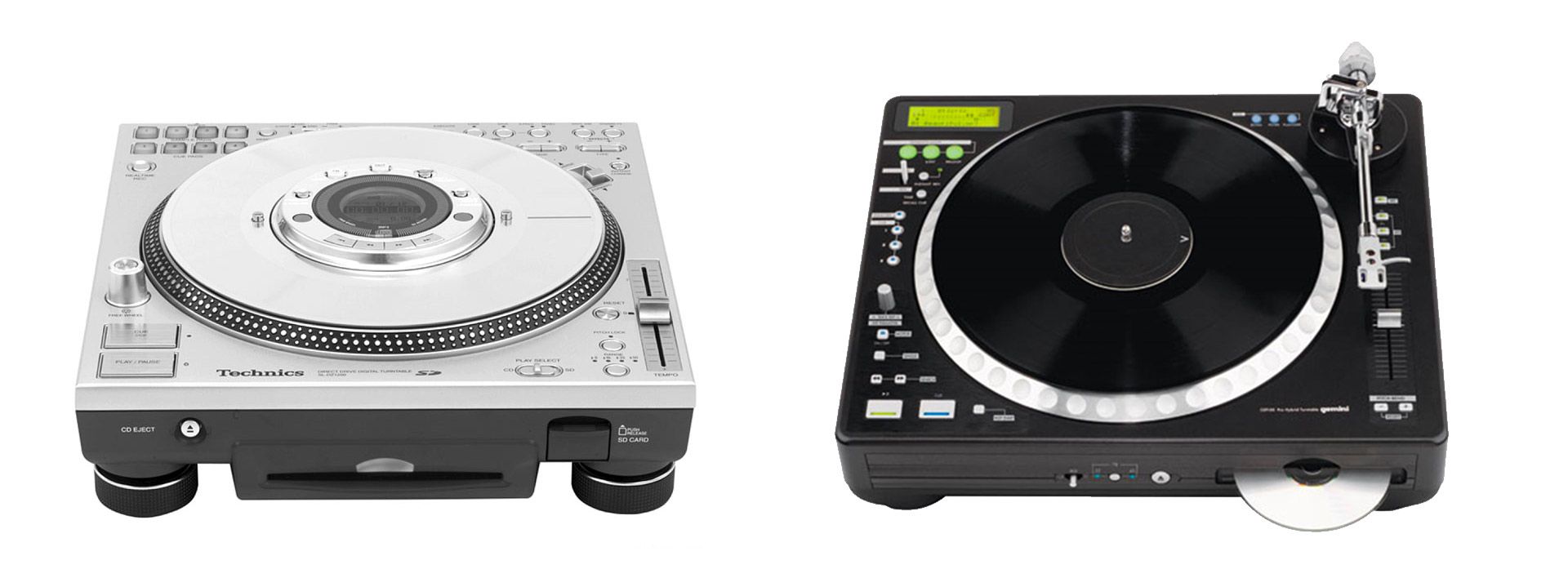
There was a small explosion of turntable/CDJ hybrids in the late 00s / early 10s (like Technics’ SL-DZ1200s, Numark’s CDX/HDX, Gemini’s CDT-05, or the Denon SC3700/3900/DN-S5000), none of them really caught on with the general public for a variety of reasons.
- At that time, Serato’s DVS system was just hitting its peak. Many club installs kept and maintained their trusty Technics 1200s and added a Rane soundcard. There was very little need to adopt expensive new players to get into the digital age.
- Quality issues – both in terms of technical problems as well as customer support issues – plagued a lot of these players as well. This led to a changing of the paradigm from spinning platters to the static jogwheels thanks to the both rapid accent of controllers in the early 2010s, and Pioneer’s rise in the club install market.
- Anyone who still wanted the spinning platter experience could easily just use Serato Scratch Live and turntables.
Spinning Platters Are Back
It’s now 10 years on from the last generation of spinning jogwheels. It seems like the spinning platter is starting to make a comeback; despite being decried as a “gimmick” by some DJs who have fully bought into the static cogwheel paradigm.
Between Rane’s Twelves, Numark’s NS7, NI’s Traktor S4 MK3, and Phase, companies are either seeing a demand from the market for spinning platters again. Or perhaps, they’re simply trying to produce something different to draw people away from the Pioneer DJ juggernaut.
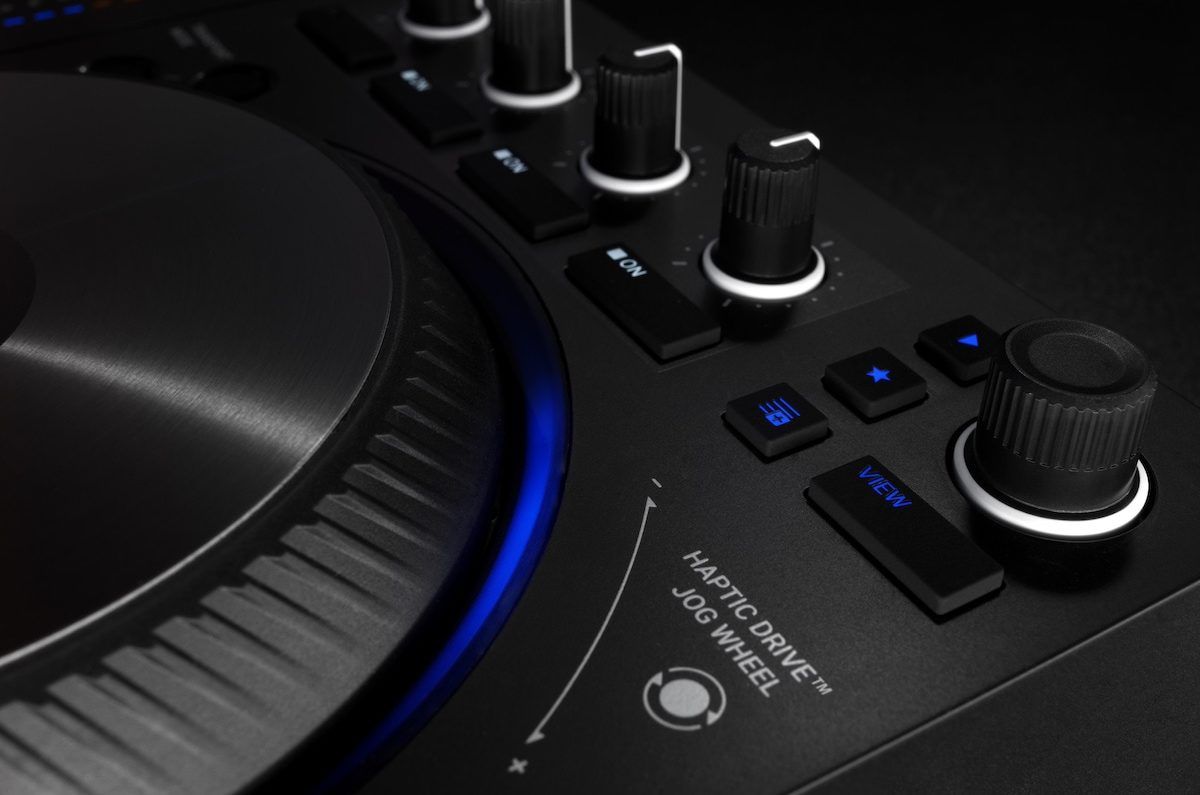
But all those options still requires the use of a laptop, and in the DJ world, the allure of going standalone and ditching the laptop has been increasingly attractive to many. With the SC5000M, Denon DJ has created pretty much the only option on the market that’s a standalone device with a spinning platter. They had tried before with the SC3700/3900 players, and the DN-S5000 before that – but that was all as “old” Denon.
With the deeper pockets of InMusic now backing the company, Denon DJ is giving the concept another shot. The SC5000M has become a unique product in the modern DJ world: A completely standalone player, with a feature set closer to a laptop controller than a CDJ, and a spinning platter to tie it all together.
Getting Hands On The SC5000M
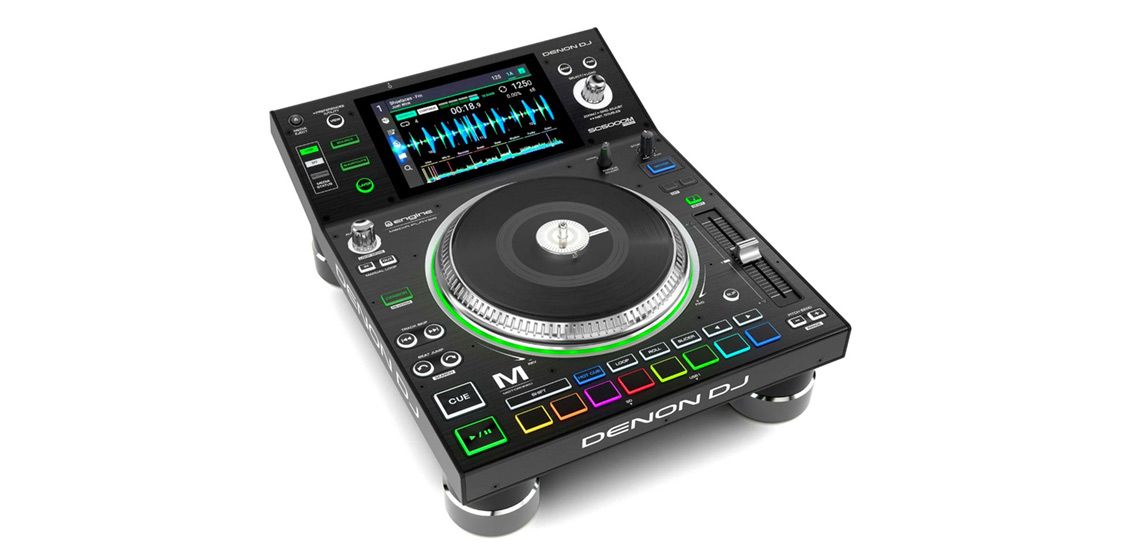
I started this review with a single SC5000M which I used with a Rane 72 (read my review of that mixer here), and then I added an additional SC5000M and a Denon DJ X1800 Prime mixer to get the full experience a few days later (thanks, InMusic). The review below focuses mainly on the platter and how it performs and feels rather than touching upon the basic features of the overall player.
Build Quality
Much like the original SC5000, the build feels solid and well built consisting of a metal faceplate on an injection-molded plastic chassis. The plastic feels high quality, not flimsy, and lacks flex that you might find on cheaper units.
Weight-wise, the SC5000M is about 5 lbs heavier than the SC5000 – to be expected due to the heavier platter and direct drive motor – but still comes in at a relatively lean 15 lbs. The player has a reassuringly heavy feel as a partial result of that weight.
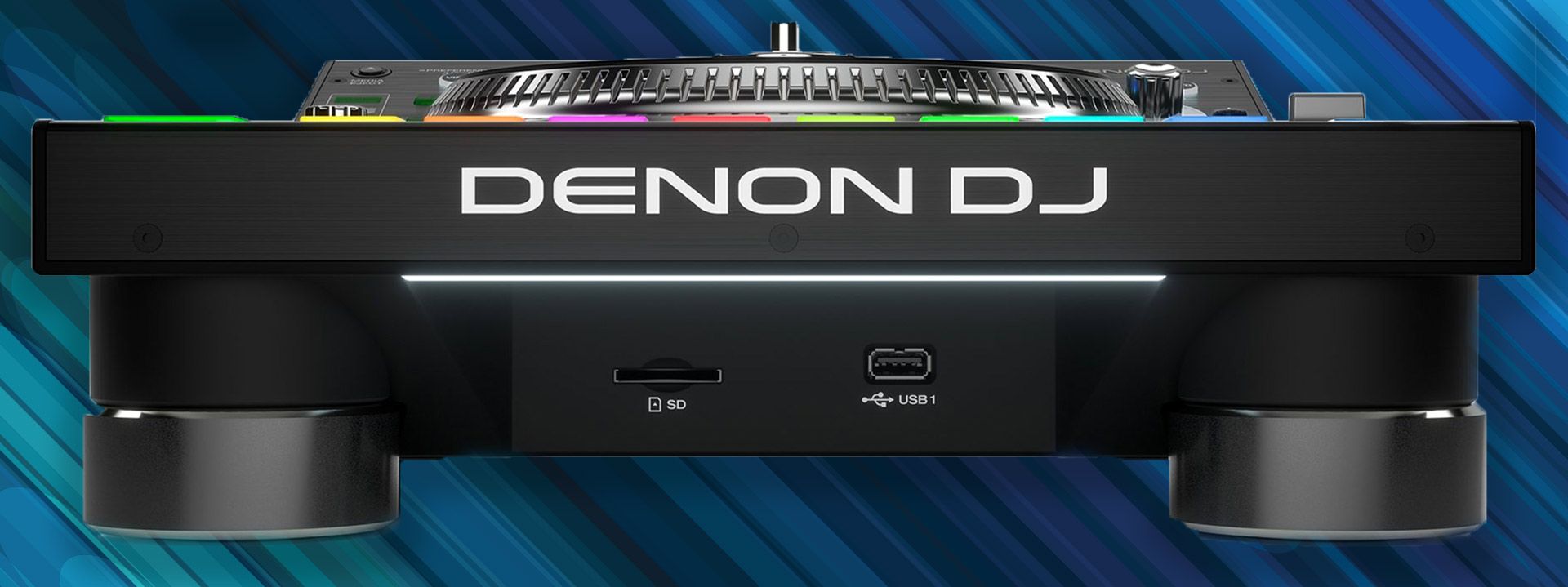
The buttons all consist of a hard plastic, with a certain clickiness that feels pretty responsive. The pads are a stiffer rubber and also have a click to them – so they are unlike the soft rubber pads you might find on a Pioneer DJ controller or MPC. They require a certain amount of pressure to get them to respond. I’m personally not a fan of this type of pad and prefer the softer pads found on many controllers. They’re responsive enough that it wasn’t a huge issue, but I did notice that the force needed to use the buttons did fatigue my hand when doing extensive cue point drumming / tone play.
The high resolution, 7” touchscreen uses glass rather than the soft LCD screen you’d find on some cheaper gear, and is extremely responsive. The display is large, vivid, and vibrant with a nice high refresh rate. This makes for a smooth scrolling waveform, unlike the choppier scrolling you find on the Rane 72 or CDJ-2000NXS2 screens.
Overall, the unit feels about as premium as anything in the industry.
The Platters
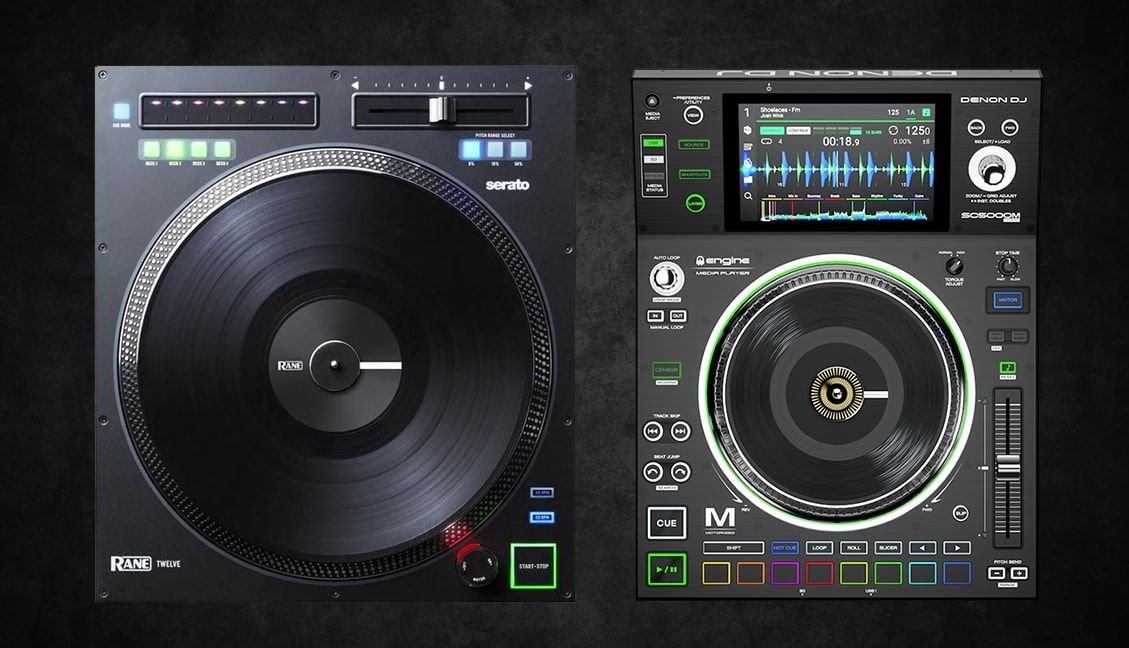
The SC5000M feels like the love child of a standard SC5000 and the Rane Twelves. The 7” platter and at the locking spindle seems lifted directly off a Rane Twelve.
The vinyl plate has the same 45-adapter-style locking mechanism to attach the vinyl to the spindle that you see in the Twelves or the NS7. Additionally, there are some metal pegs that the platter lines up with to lock in the spindle rig which rotates alongside the record. The record is attached to the spindle using an included allen key.
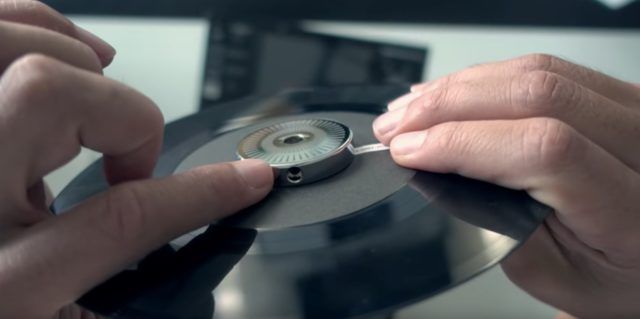
Also as on the NS7 / Twelves, the tension can be adjusted by ever so slightly raising and lowering the plate before tightening the screw with the allen key. Raising the plate makes the platters feel looser, while lowering increases the tension. The range allows for a similar change in feel to using a slippery scratch slipmat like Butter Rugs vs a thicker shipmate designed more for mixing.
The motor is likely is similar to the Twelves / VL12 Prime turntable since they share similar components, (I was unable to do a side by side comparison at the time of the writing), albeit tweaked a little to account for the smaller platter.
The torque is adjustable between a high and a low setting via an easily accessible toggle knob, and the motor feels very strong – starting up pretty much instantly with a starting torque listed at 3.3 kgf/cm on the high setting (vs the 5 kgf/cm starting torque for the Twelve or VL12 turntable). The brake time can be adjusted via a knob and allows you to dial in your record stop feel to your own preferences – as well as turn it up higher to emulate a power-down sound that is usually done via the power switch on a turntable.
The sides of the platter eschews the more standard dotted design emulating Technics turntables, with a slatted design found on the Denon VL12 and is similar to the Numark NS7 and old TTX turntables. While I’m usually not a fan of the slatted platter edges, the design on the SC5000M (and the VL12 turntable) is actually pretty clever. Rather than having the slats take up the entire side of the platter, they only go down to about the halfway mark, with the lower half flared outwards making a nice little channel that fits a finger perfectly allowing you to rub the edge of the platter for minute pitch bends, or rub higher and catching the slats for more dramatic changes. It’s actually a very nicely thought-out design and shows that there is still room for innovation – however subtle – in a tried and true design that has changed little over the decades.
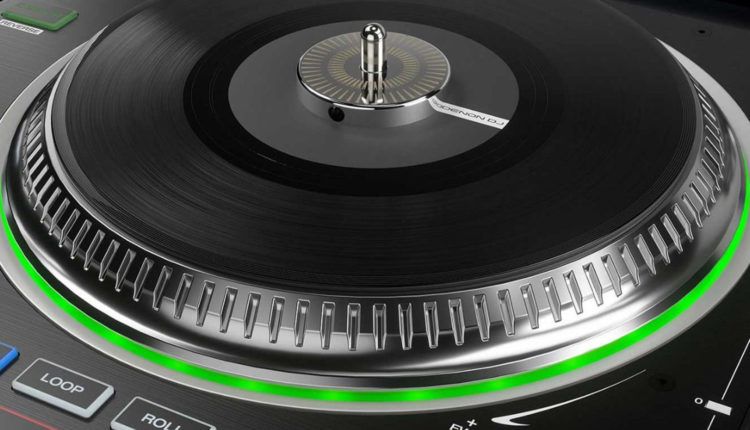
Much like any of the current digital spinning platters, the spindle is unfortunately locked into the movement of the track and cannot be used to adjust the speed of the platter via pinching and twisting (what some of my colleagues have affectionally referred to as “nipple twisting”).
The motor can be turned off entirely and the deck used as a complete static platter, but I honestly can’t see a reason to do so as you lose any vinyl control entirely.
The accuracy of the platters are very tight. Denon claims “3600 ticks” of resolution (just like the Twelves) which sounds nice and high, but not exactly a number than means much without any frame of reference. Overall when playing though, I didn’t have any issues with the feel of the platter when manipulating audio.
I also found no discernible stickler drift (which is something very apparent on my Denon SC3900s). Sticker drift, to those unfamiliar, occurs on digital spinning platter setups when the sticker used to mark the position of tracks or samples can “slip” or lose position due to certain fast or very slow techniques (quick video explanation below)
I also didn’t notice any wow or flutter affecting the stability of the BPMs. My guess is that the processor includes some digital pitch smoothing to compensate, similar to the anti-drift feature on Serato DJ Pro. Even using the unit for timecode, I saw no fluctuations with the pitch in the Serato software – which is pretty impressive.
Overall, the platters feel great. The 7” design might throw off some DJs used to a larger platter, but for the most part, everything felt solid and familiar. Granted, I consider myself an intermediate scratcher on my best days and the difference in feel from a smaller platter might be more of an issue for a high level scratcher that has mastered the subtleties of hand placement, record movement, and platter technique, but given some of the crazy stuff I’ve seen in the portable turntablism world, I’m guessing it’s not going to be a huge issue for most.
What The SC5000M Platters Leave To Be Desired
There were a few things that feel like drawbacks – or at the very last, considerations that any DJ should consider before purchasing a pair of SC5000Ms:
7” Platter + Scratch Techniques
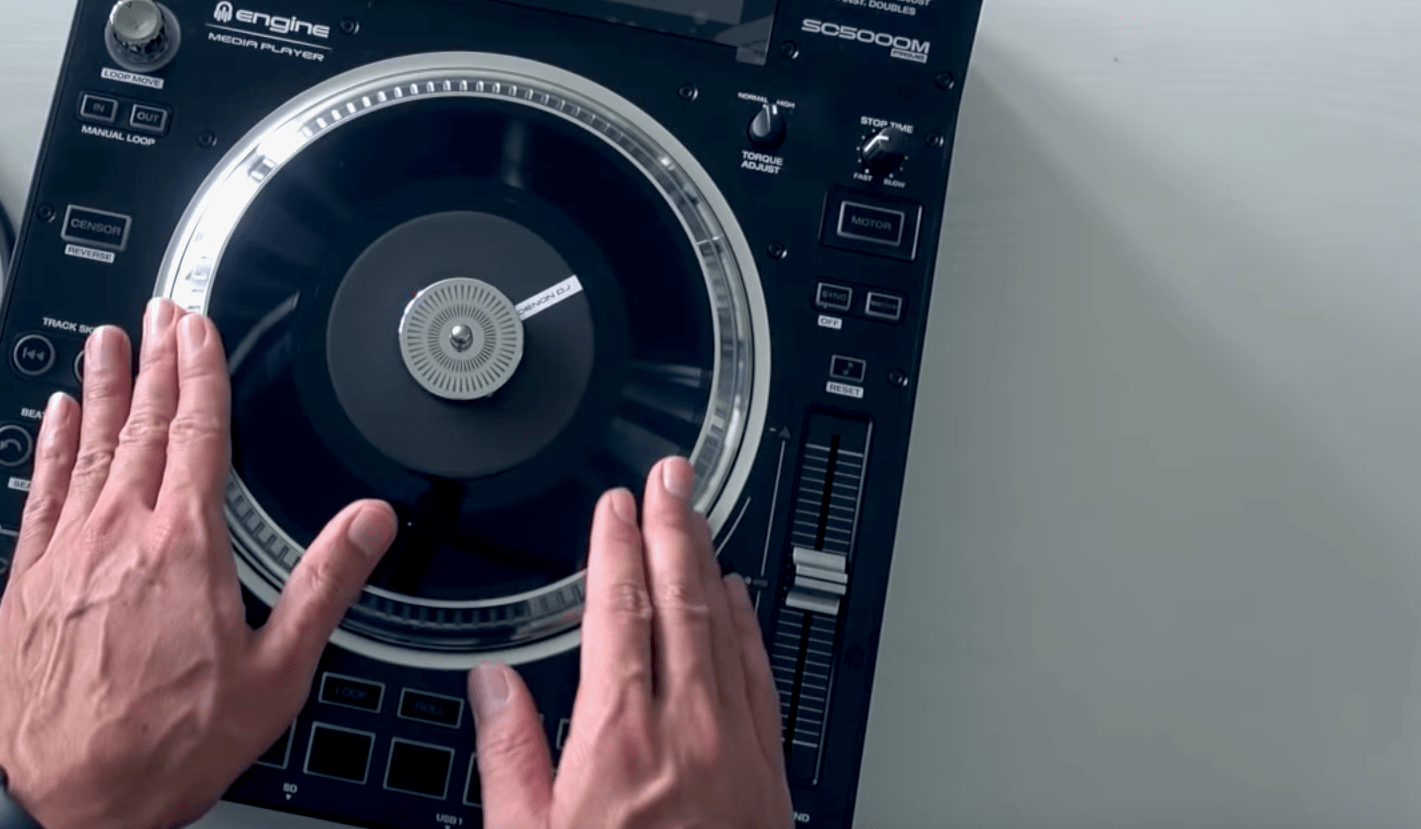
The platter itself will take a little getting used to for those that have only ever used 12” platters.
The centre adapter takes up a decent amount of space on the record, so the lack of real estate for hand placement may require some adjustment to scratch techniques. Likewise, the smaller platter will have an effect on certain techniques since the closer proximity to the spindle (and therefore the motor) will affect the amount of force required to manipulate the platter.
As a result, the smaller platter actually feels stronger for certain techniques despite the lower torque compared to InMusic’s 12” offerings. This definitely required a certain amount of adjustments for some of my cuts since some techniques, I prefer to use the outside of a 12” platter rather than being closer to the centre – to the degree that I found myself sometimes preferring the low torque setting when cutting and scratching.
Below-The-Platter Pad Placement
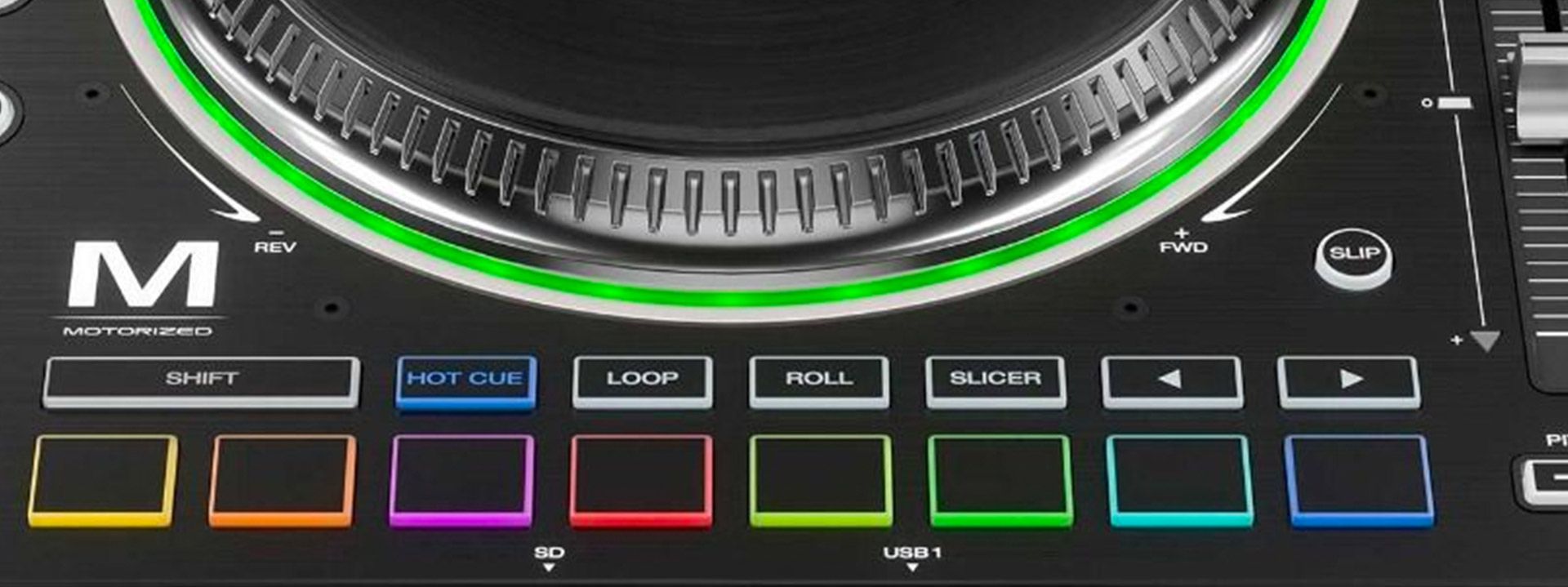
While the pads being immediately under the platter is fairly standard for most controllers, when using spinning platters, the placement feels a little more clumsy. Unlike static platters that have a digital position indicator that automatically resets the position when hitting a cue, using spinning platters generally requires two hands – one to centre the sticker at the desired location, and the other to press the pad.
Because the pads are located directly beneath the platter, it felt a little awkward to put my fader hand under the platter hand to press a cue when holding the record still. I would prefer the pads on the mixer – much like the 72 or S9 where my hand can move slightly to the pad to press, and then immediately back to the fader.
Platter-Tension Adjustment
Using an allen key to adjust the height of the record is not my favourite method of tension adjustment. First, you need the key – and if you forget to bring it to a gig or lose it, you’re out of luck in adjusting the platter tension.
Second, it was very difficult to find the “sweet spot” for me. I found that the highest placement was a little too loose, and the lowest placement was much too tight. Because the distance between high and low is about a millimeter, it took quite a bit of fiddling to not only find the right spot, but to replicate it on both decks so the platters felt identical. Just due to the design of the locking spindle, I’m not sure if there’s a better solution, but the current one is a little frustrating. Fortunately, you should only have to do it once.
Scratch Algorithm
With any digital platter system, there’s going to be a certain amount of “digital” sound to some scratch techniques – especially for very slow movements like drags. While it’s not the worst I’ve heard, and only really noticeable for certain sounds and techniques, it’s also not the best – compared to even the Rane Twelves and Serato.
Pitch Lock/Shifting
The pitch lock algorithm is, imo, one of the best on market currently. It allows for some pretty wide pitch shifts without any discernible artifacting to the audio.
But there are also some very apparent issues with the pitch lock option with the spinning platter – and not just for scratching. I found that if the track is pitched up or down or the key shifted, certain mixing techniques like platter tapping or more aggressive platter pushes – and even using the pitch bend buttons – can sometimes disengage the pitch lock leading to a split second warping of the audio. This is especially noticeable when tracks are pitched beyond 4-5% percent or key shifted. My guess is that the pitch lock automatically disengages when it detects certain platter motions, but it can be a little more sensitive than most.
Lack Of Native Serato Support
Now this is still supposedly in the pipe (it’s been “in development” for over 6 months according to this forum thread), but as someone who still prefers the use of Serato for a lot of gigs, having proper HID mapping would make these almost the ultimate players. The players have pretty much everything needed to conform to Serato’s control scheme, and would essentially be a mini Rane Twelve – only with more controls, and the ability to play standalone.
A Few Small “Glitches”
While playing, I did notice a few non-deal-breaking annoying glitches with the decks including: instant doubles not always working, platter spinning at an extremely fast speed on track load that required moving the pitch around to reset, trouble syncing up the color codes to the X1800 mixer even after resetting them on the player, and the load button on the knob not always working requiring using the screen to load tracks. The last seemed to happen most when trying to load a track with the button while the platter was still spinning, and after stopping the platter, the button load wouldn’t work forcing me to use the screen – which may be an intentional design decision.
Overall Thoughts on the Denon DJ’s Prime Ecosystem
The review above solely considers the spinning platters on and the suitability for turtable-style uses of the SC5000M. Aside from the platters, the only additions on the Ms are some additional controls for the platters, an added cooling fan, and the removal of the on-jog screen.
I did spend a lot of time with Denon DJ’s Prime system as a result, so keep reading for some of my general thoughts on it, including how it compares to using a laptop DVS.
Note: As of this review, the SC5000Ms are on the 1.3.1 firmware update which implemented a few much-requested features like key shifting and more robust searching, as well as fixing some bugs.
What the Prime players really excel at is the intuitiveness and familiarity of their User Interface. Everything about the players feels familiar if you’ve had experience with virtually any other modern gear, from the user interface to the feature set. Here’s my likes and dislikes:
What’s Great About The Prime System
User Interface
I really enjoy the User Interface Denon DJ cooked up for the Prime units. Everything feels intuitive and easy to control with familiar smartphone multitouch gestures for easy navigation of menus and playlists on the gorgeous, high resolution and high refresh rate screen.
Instead of digging through menus or scrolling on hardware controls, playlists can be accessed easily by tapping on the screen or tapping on a column header to sort. Relevant information is very obviously displayed and easy to interpret, and everything looks and feels snappy without any apparent lag.
Control Set Functionality
The Prime controls are very robust, following the now-ubiquitous 8 pads per side control scheme, with multifunctional controls for the pads. The control scheme feels completely familiar to anyone coming from a Serato, Traktor, or even Rekordbox controller, only with a few tweaks. You get many of the standard laptop controller features like pad-controlled loops, loop rolls, slicer, dedicated beat jump controls, instant doubles, key shifting, etc. This makes the transition from a laptop program much easier than having to learn brand new control placement or go menu hopping to access certain features.
Likewise, Denon’s takes on some of the familiar controls are all pretty intuitive; incorporating triplets into the loop roll seems natural, with the triplets displaying as a different color, or the unique pad-loop controls that allows setting the in and out point off a single pad and automatically saves the loop – even if it feels a little redundant with the dedicated controls already in place elsewhere on the player.
All in all, there were only a few controls I was missing from my usual Serato setup. With the dual-layer mode, the multiple USB slots, and the multi-touch screen, the current functionality of the Denon DJ Prime units pretty much surpass any standalone unit on the market in terms of pure features and usability.
Key shifting/syncing:
This was at the top of my feature wishlist and was added with Engine 1.3.1. Since the functionality was announced for the Prime 4, it seemed pretty inevitable it would show up or the SC5000 players eventually. The interface is fairly simple – tap on the key tag on the screen to bring up the key shifting controls and move it up or down by semitones. If you long press the Key Lock button, it will automatically sync the pitch of the track to the closest compatible harmonic key.
Overall, the algorithm sounds pretty clean when staying within a semitone or two, although moving beyond that, some artifacts begin to show with more extreme pitch shifts. It isn’t quite the quality level of Serato’s Pitch n Time, but it does the trick. In terms of standalone players, this feature is currently unique to the Prime players – Pioneer CDJs do not offer this functionality.
Two Decks In One

In a perfect world, I’d prefer to have four players to DJ on four channels. But not everyone has the resources to purchase that many media players – even at Denon DJ’s competitive prices.
With the dual layer feature, one can invest in a 4-deck setup for the cost of a pair of players and a 4 channel mixer. Switching deck layers has been a standard thing in the 4-channel controller market, so anyone with experience there (ie on a DDJ-SX/2/3) would feel perfectly comfortable with the layer switching.
The ability to play an entire set on one player is also incredibly convenient. As a DJ who tends to bring gear to nearly every gig, I have taken to using a single deck and instant doubles for some smaller gigs to save on weight and the features provided by the SC5000M gives me that same ability with almost the exact same workflow.
Waveforms
While the tri-colored waveforms aren’t quite as detailed as Serato’s multi coloured waveforms, it’s still fairly intuitive to read frequency spectrums. The one thing I really liked about them though, is how any of the Slip features worked (like loop roll, censor, or turning on the Slip mode) with the waveform splitting in half and displaying the Slip behaviour on top while still showing the moving track below. Is it super useful? Not really. I just think it looks really cool.
Rekordbox Compatibility
This is firmly in a “good concept, but needs improvement” which hopefully will get better with more updates. Moving closer and closer to full integration of Rekordbox and the Prime ecosystem seems paramount to the success of the Prime lineup.
“Moving closer to full integration of Rekordbox […] seems paramount to the success of the Prime lineup.”
With Engine 1.3.1, the ability to import your entire Rekordbox library of playlists is yet another step in making the changeover from Pioneer to Denon as easy as possible. While the feature requires manually exporting the Rekordbox library XML to your computer and manually importing the same file to Engine (rather than say, automatically reading the Rekordbox library), the time saved by simply importing a Rekordbox XML over manually copying over crates and playlists is much more convenient – although large libraries will require an overnight export (importing about 1300 tracks took over an hour for me).
Onboard Playlist Creation
As on the Prime 4, it is now possible to create and edit playlists and crates directly on the SC5000/Ms. New playlists and playlist folders can be created easily and a new Edit icon can be used to delete tracks from existing playlists or move files to other playlists, or move existing playlists to folders. The UI is fairly straightforward – press the Edit icon, select the tracks you want to move, and drag and drop into the desired playlist. Pressing the Edit icon also allows for the creation of new playlists, crates, or folders.
That said, when it comes to moving tracks into playlists contained within folders, I have not found a way to move tracks from one playlist to a playlist embedded in a folder. It would be nice if holding the files over a folder would automatically open that folder (much like the behaviour in macOS).
What Needs Improvement in the Prime Ecosystem
Scratching With Key Shifting Engaged
Much like my issue with scratching with key lock engaged, the problem is even worse when the track is pitch shifted. Denon DJ needs to put some serious work into the scratch behaviour in relation to the pitch shifting as the changing in pitch is glaringly obvious when scratching. This doesn’t happen in laptop / DVS software (Serato, Traktor, or Rekordbox) so it’s a very noticeable issue when using key shifting and the SC5000Ms.
Searching Improvements:
4+ hour, multi genre sets spanning multiple BPM ranges are the norm for me, so having a robust search engine is essential to my workflow.
I was pretty disappointed to learn that the track search function was relegated to only my entire collection. I have a very specific system based primarily on using searches for terms I embed in the genre field to pare down specific playlists for relevant tunes, and the lack of playlist-specific searching really affects my workflow. The 1.3.1 firmware update thankfully added a number more fields to search through, but having playlist-based searching would be a huge improvement over the current setup.
Undo Feature
This is one of those features that might not seem sexy, but it’s something I really miss when it’s gone.
Being able to switch back to the last track loaded is such nice little feature for me. I can load a track I think will work, but audition a few others, and if I don’t like the new track, I just undo back to the last track. Without it, if I change my mind on a new track, I have to either search again for the last track, or navigate the playlists to find it again.
This is one of the missing features that really turned me off Rekordbox when I was reviewing the DDJ 1000 (although Pioneer has since added in that functionality).
Engine:
Engine 1.3.2 has released since the writing of this article, but I didn’t have the opportunity review it properly.
This the elephant in the room in regards to the Prime ecosystem. The current state of the Engine track preparation software has limitations.
From a usability perspective, the lack of modern track management features is staggering at this point. Being unable to do something as simple mass tag tracks is a huge omission, and not implementing an easy beatgrid control for stretching and compressing grids is something sorely missing from both in the Engine software and on the players themselves.
I also found myself sorely missing some form of smartcrates as that is something I rely on for keeping my large collection organized. There is no way I could use Engine as my primary management software without pairing it with something like iTunes, Rekordbox, or some other, more robust track management software. Even Serato’s somewhat dated library management system is worlds better than what Engine Prime currently offers.
While I found the BPM analysis fairly accurate, the limited BPM ranges felt frustrating, and there were some incredibly head scratching BPM detection errors that slipped through.
Engine feels like it still needs such a long way to go and I feel like it’s one of the main things holding back these players. Fortunately, there are 3rd party solutions like the Denon Conversion Utility which allows you to transfer Rekordbox information to Engine, but it does require extra cost and more steps in prepping tracks.
Install Base
This is, of course, the biggest issue with a Prime setup. It’s simply not widely available at venues. This makes owning the system a little inconvenient – having to maintain two libraries (or at least purchasing some extra software to do if for you), and constantly being unable to play on your own preferred setup at many gigs without lugging your own gear out. For many, the convenience is worth the feature downgrade and premium cost of the Pioneer DJ ecosystem.
Would I Switch To SC5000s?
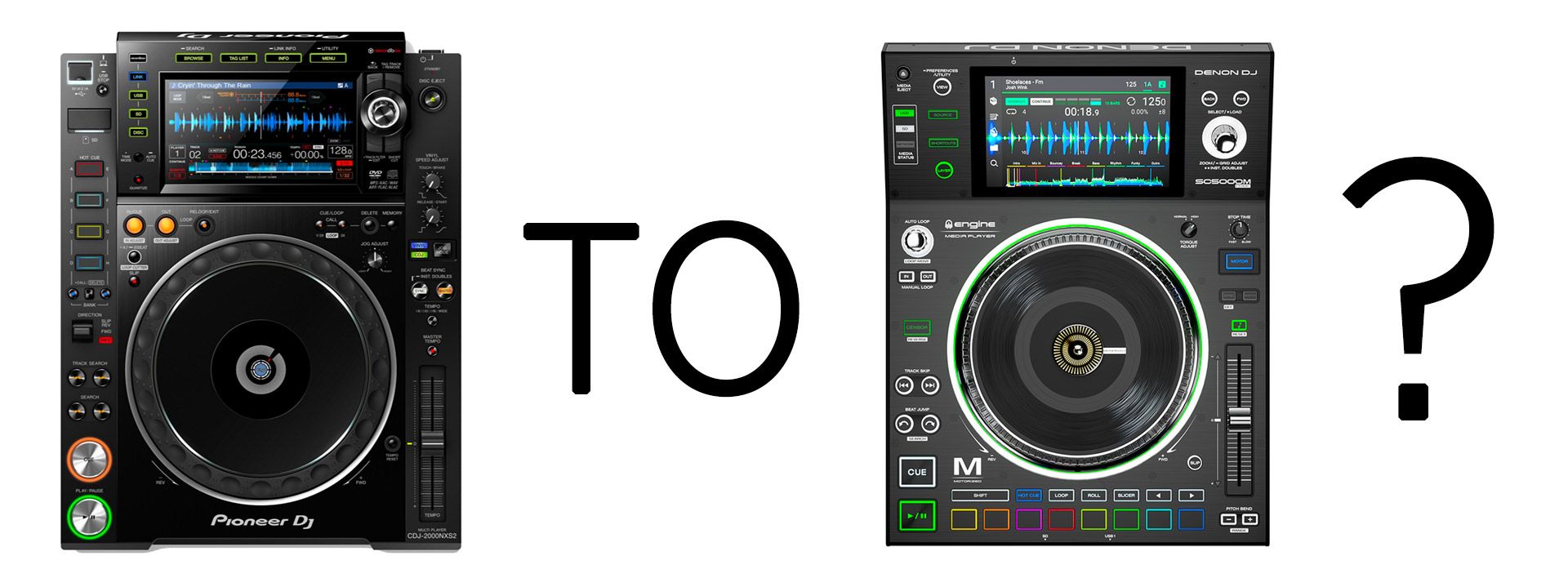
Would I consider switching from Serato to a pair of the SC5000Ms and entirely ditching the laptop? At this point, probably not. I’m a little too set in the workflow I had developed in Serato and as robust as the SC5000M players are, they aren’t quite robust enough to be my go-to setup for gigs.
Once native Serato integration gets implemented, I would probably consider the purchase just because they are so much fun to use and having the option of playing standalone or using native Serato HID rather than just using it as timecode machine would be fantastic.
That said, I had a ton of fun playing on it – despite the limitations – and if I strolled up to a gig with these installed, I would most definitely consider keeping the laptop closed for the occasional gig – even after the player gets Serato support.
For those Pioneer CDJ/XDJ users considering the Prime setup, it’s a little more difficult a decision. While I stand by my opinion that the functionality and overall experience of DJing on the SC5000 Prime setup is far superior to CDJs, and the value of the players is unparalleled (you can get a standard SC5000 for less than the price of the much more limited XDJ-1000), the convenience factor of maintaining the same Rekordbox-compatible library and having a similar experience between the home setup and the club can be difficult to part with.
That said, Denon DJ is attempting to improve the compatibility with Rekordbox USB drives with every update – so this might shift in the future.
Would I sell my pair of CDJ-2000NXS2s for these? Probably not. While I do wholeheartedly consider the SC5000 line as superior functionality-wise to the CDJ-2000NXS2 players, if you’ve already made the (large) investment in the industry standard of the NXS2s, the improvement in functionality and UI probably isn’t worth the sunk cost in the players. That’s not to mention the ROI you could get in renting out the units (especially since the demand for NXS2 rentals is going to be exponentially higher).
Would I consider the SC5000s over the XDJ-1000 or even a brand new pair of CDJ 2000-NXS2s if upgrading from a controller or older set of CDJs? Absolutely. Yes, it might be frustrating having all these great features not be accessible when playing on a CDJ setup, but any DJ that has even a modicum of experience should be able to adapt easily. Additionally, if the spinning platter is something you crave, there really is no other option.
“there’s absolutely nothing like it on the market right now”
As is, I think the SC5000M is a bit of a unicorn in the DJ world – there’s absolutely nothing like it on the market right now. The spinning platter might make it a little bit of a niche product to most, but the end result is simply a ton of fun and a joy to use. While it is lacking in several features to fully bring it in line with a 72/Twelves setup, and the issue with install base and the limitations of Engine Prime are absolutely a concern, this player ends up being better than the sum of its parts. Something about playing a set on spinning platters while not having a laptop present, yet still having almost all the control I was used to in Serato just felt good. It’s like multiple DJ paradigms all coalescing in a high quality unit marrying the platters of a turntable, the standalone ability of a CDJ, and the feature set of a laptop controller.
For those DJs still addicted to spinning platters and looking to delve into the standalone world, the SC5000Ms are most definitely worth a look – although, they are also your only choice.

